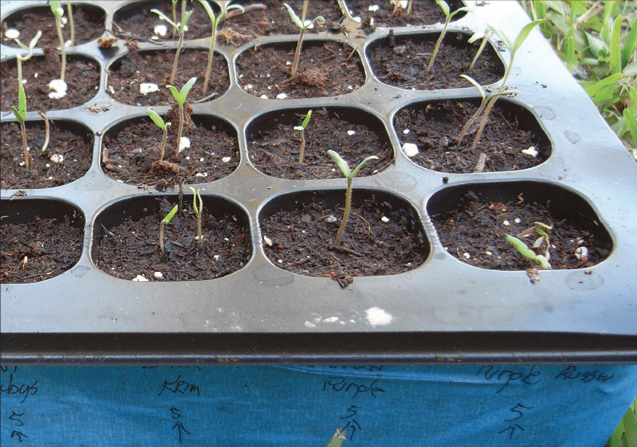Fall Means Time to Dig in and Start Your Garden
Fall is planting season here, and the best sources for hardy vegetable seedlings and savvy planting advice are likely to be--you guessed it--your local farmers.
Every autumn, South Florida backyard gardeners can get a head start on the growing season by buying tomato, pepper and other vegetable seedlings at farm sales. This is a perfect example of why it makes good sense to buy locally, says Charles LaPradd, Miami-Dade agricultural manager. Big-box retailers push tomato plants in spring because they promote the rest of the country's growing season, but "it just won't work here," he says. Local farmers know what grows best and when to plant. Every October, Miami's Little River Market Garden hosts a seedling sale. This year, they're offering 25 varieties of heirloom tomato plants, peppers, eggplants, herbs and other garden-ready seedlings started in biodegradable peat pots and fed organic fish spray. "You get them at five to six weeks, so they are big, strong, healthy and ready to be transplanted," says farmer Muriel Olivares on her blog.
GrowFest! at Fruit and Spice Park in Homestead is another source for local seedlings. Bee Heaven Farm will have over 80 varieties of heirloom tomato seedlings, vegetables, Asian greens and perennial herbs. Bee Heaven also sells seedlings when it returns to Pinecrest Gardens farmers market in December. At these events, farmers are able to answer questions and provide growing advice.
You can start own seedlings, using saved seeds or buying them from catalogs. Bear in mind that information on the packets about growing and harvest time may not apply to the South Florida growing season, and keep notes about actual results, says Olivares. "I make note of harvest times, germination times, pest issues and other details."
South Florida Edible Plants & Herbs Swap Facebook group
{Planting Seedlings}
These tips come from Organic Methods for Vegetable Gardening in Florida by Ginny Stibolt and Melissa Contreras.
- First, prepare soil for planting, either in raised beds or containers with good drainage. Remove weeds and add compost, peat moss and perlite to the soil, and cover with mulch - pine needles or straw. Look for seedlings that have good color and thick top growth.
- The day before you transplant your seedlings, soak the plants in their pots and soak the soil in your beds or containers until it is moist two to three inches deep.
- Turn seedling pots upside down and gently squeeze the pot to release the root ball. Don't pull the plants out by their stems. (If your seedlings are in containers made of newspaper or cardboard, just place the container into the soil.)
- Dig holes in the bed or container to plant your seedlings. They should be deep enough so that the roots can spread downward. Place seedling in hole and fill with soil or compost.
- Water thoroughly and make sure stems are not stuck in the mud. Re-cover soil around the plants (but not touching them) with mulch.
- Water your transplanted seedlings thoroughly every day. Don't just wet the surface.





